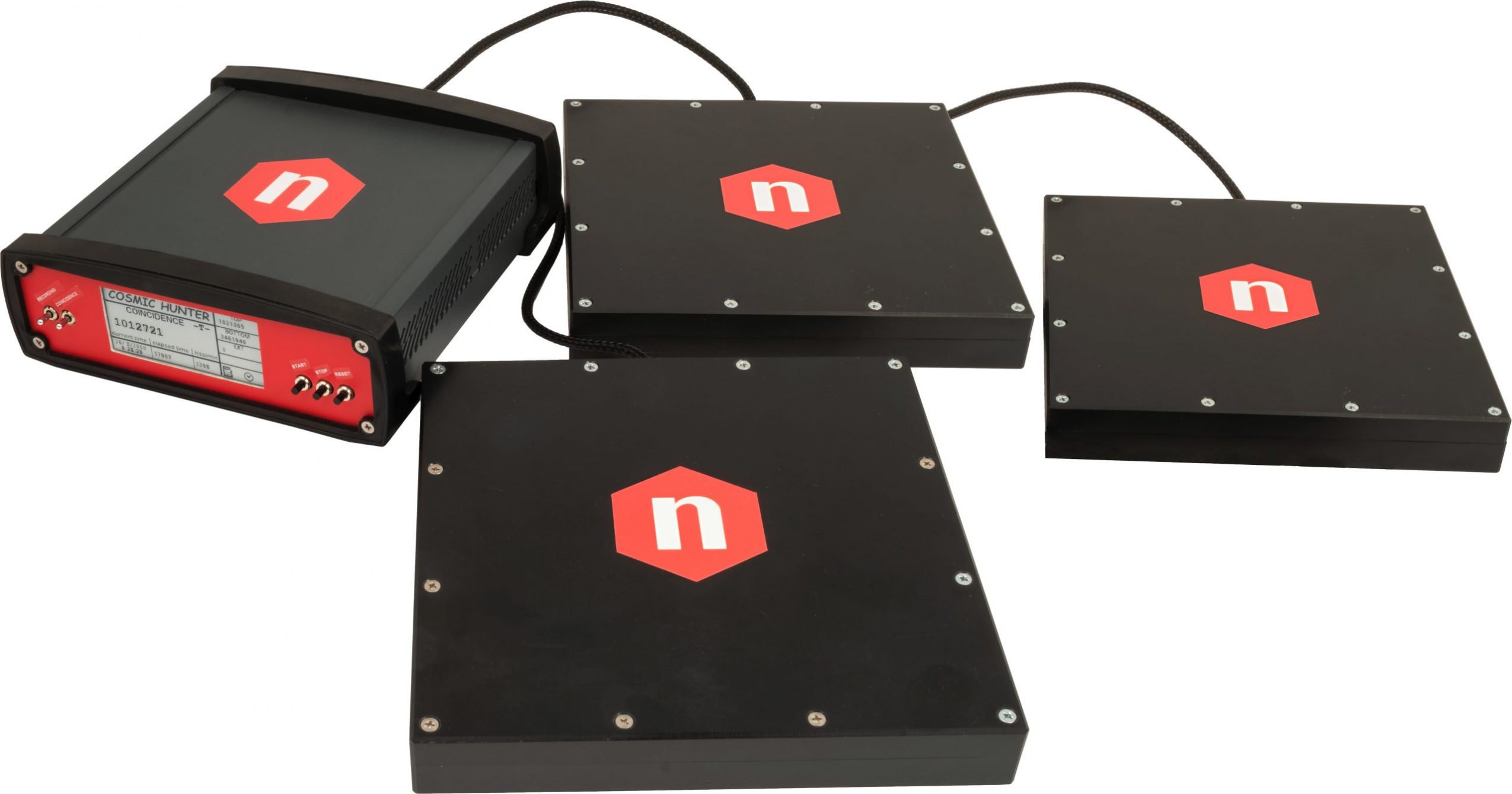| Difficult | Execution Time | Data Analysis | Radioactive Sources |
|---|---|---|---|
| Yes | No |
Hardware setup
This experiment guide is referred to the SP5620CH educational kit.
Equipment
- SP5620CH – Cosmic Hunter
- Additional SP5622 – Detection System
- DT1081B Four-Fold Programmable Logic Unit (Discriminator, Coincidence and Scaler modules in one solution)
Purpose of the experiment:
To goal of the experiment is the evaluation of the detection efficiency of the scintillating tiles that make up the system.
Fundamentals:
Detection efficiency is the probability that a particle is detected after crossing the sensitive volume of the detector. Detection efficiency is dependent upon the incidence angle, the cross-section through which the particle interacts with the scintillator, and on its physical dimensions. The efficiency of a detector can change depending upon the bias voltage applied and upon the particle type and energy. The efficiency (ε) is defined experimentally as the ratio between the number of detected particles (N0) and the number of particles incident upon the detector surface (N):
ε = N0 / N
The number of the particles detected in coincidence between additional detectors can be expressed as the product between the impinging particles and the efficiency of each detector. The following expressions can be assumed for the double and triple coincidences:
NAC = εA*εC*N0 and NABC = εA *εB*εC*N0
Thus, the detection efficiency of the scintillating tile positioned in the middle can be expressed as:
εB = NABC / NAC
Carrying out the experiment:

Experimental setup block diagram
Connect the cable connectors of the three SP5622 to the tile inputs located on the rear panel of the SP5621 module. Power on the SP5621 module and start the acquisition via the front panel START button. When a charged particle crosses the black tile it’s energy is converted into scintillation light. The photons which are produced are detected by the photosensor and converted into an electrical signal. The number of counts for each scintillator may be viewed via the SP5621 display. Select triple scintillator coincidence mode via the related button on the front panel, then select the integration time of the measurement. Arrange the geometry of the detectors as depicted in the diagram above. Be sure to keep this geometry for the duration of the experiment. This system configuration allows the user to test the efficiency of the central scintillating tile.
Connect the signal outputs of the three scintillating tiles to an external apparatus in order to identify double and triple counts at the same time, which correspond to the same cosmic ray.
To estimate the detection efficiency of the upper and lower scintillating tiles change the detector positions and repeat the measurement.
Results:
The efficiency value for each detector should be very close to one another.

Detection efficiency of the three scintillating tiles – SP5622


